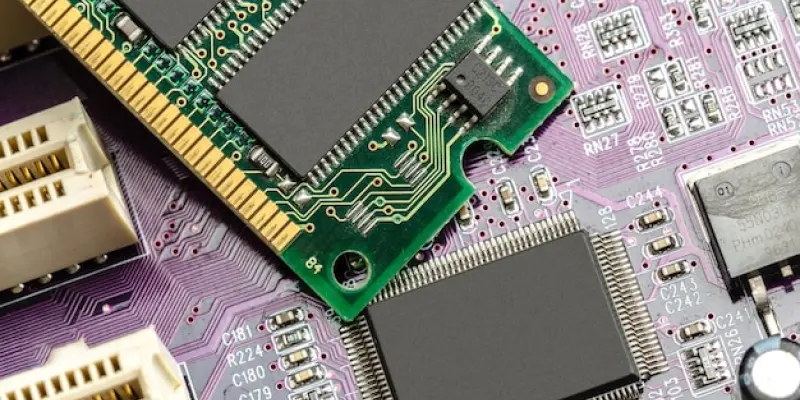Building or upgrading a PC can be both thrilling and challenging, akin to piecing together a complex puzzle. The process involves selecting and assembling various components, each requiring careful consideration to ensure they work seamlessly together. This guide aims to help PC builders, whether novices or experts, navigate the intricate task of ensuring part compatibility for a smooth and successful setup.
Motherboard Compatibility
One of the most essential aspects of PC building is selecting a motherboard that fits your needs and accommodates other components. Motherboards come in various sizes, with ATX, Micro-ATX, and Mini-ITX being the most common. Each size dictates the form factor of your build while also determining the number and type of expansion slots and connectors available. This makes it crucial to choose the right motherboard size to match your build requirements and ensure sufficient connectivity for your chosen components.
When selecting a motherboard, consider the physical dimensions and form factor of your PC case to ensure a proper fit. Matching your other components to the motherboard’s available slots is equally important. Resources like PCPartPicker and BuildMyPC offer virtual PC building tools that make it easier to check compatibility between different parts. These websites allow users to assemble a virtual build, ensuring each component fits and functions seamlessly with the others before making any purchases.
CPU and Motherboard Socket Compatibility
Ensuring compatibility between the CPU and motherboard is paramount to a successful PC build. Manufacturers like Intel and AMD use distinct socket types, such as LGA 1700 and AM4, respectively. The CPU socket denotes where the processor connects to the motherboard and must match the socket type on the motherboard. Additionally, each socket type pairs with specific motherboard chipsets, which affects the board’s features and performance capabilities. For instance, Intel’s LGA 1700 processors work with Z690, H670, B660, and H610 chipsets. Verifying that the socket and chipset of the CPU and motherboard match is critical to avoid compatibility issues. Improper pairings can result in non-functioning systems or limited performance. Conducting thorough research and referencing compatibility tools can help buyers make informed decisions, ensuring the selected CPU and motherboard are designed to work together.
GPU Compatibility
Selecting a GPU (graphics card) is generally more straightforward compared to other components. The primary requirement for GPU compatibility is that the motherboard has a PCIe x16 slot, which can accommodate most consumer GPUs. Whether choosing an NVIDIA or AMD card, focus on ensuring the motherboard is equipped with a PCIe slot. Deciding between NVIDIA and AMD typically comes down to personal preference, specific performance needs, and budget considerations.
Most modern motherboards support a wide range of GPUs, but it is still essential to verify the power and cooling requirements to avoid bottlenecks. Ensuring the GPU fits within the PC case and does not obstruct other components is also crucial. By paying attention to these details, builders can confidently choose a graphics card that enhances their system’s performance while maintaining overall compatibility.
Power Supply Unit (PSU) Importance and Selection
An often-overlooked but vital component of any PC build is the power supply unit (PSU). The PSU plays a crucial role in converting electrical power from the wall outlet into usable energy for all components. Every component in your PC requires a certain amount of power, making it essential to select a PSU that delivers sufficient wattage for the entire system. Tools like MSI’s and NewEgg’s online calculators simplify calculating the exact power requirements for a specific build by providing estimates based on the selected components. PSUs come with various efficiency certifications, such as those from the Cybenetics and 80 Plus organizations. These certifications indicate the unit’s efficiency and noise levels, ranging from bronze to titanium. Higher certifications typically correspond to better efficiency and lower power loss, along with quieter operation. Choosing the right PSU ensures the stable performance of your system, protection from power surges, and reliability against unexpected shutdowns. By understanding the power requirements and efficiency ratings, builders can select a power supply unit that supports their build’s needs, thus safeguarding all other components.
Summary and Consensus Viewpoints
Building or upgrading a personal computer (PC) can be both exciting and demanding, much like assembling a detailed and intricate puzzle. The process entails selecting and putting together numerous components, each of which must be chosen with great care to ensure that they work harmoniously. This journey, while potentially daunting, offers a rewarding experience for technology enthusiasts and everyday users alike. Proper component compatibility is crucial for a successful setup. From the central processing unit (CPU) to the graphics card (GPU), each part plays a vital role in the system’s overall performance. Ensuring that your power supply unit (PSU) provides adequate wattage, confirming that your motherboard supports your chosen CPU, and making sure that your memory (RAM) is compatible are just a few examples of the meticulous steps necessary. This guide is designed to assist PC builders—whether you’re building your first computer or upgrading an existing one—in navigating the complexity of part compatibility, ultimately paving the way for a smooth and efficient assembly process. By following this advice, you can enjoy a more seamless and successful endeavor in creating your ideal PC setup.

